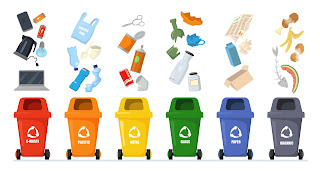The Circular Economy: A Pathway to Sustainable Business Growth
In a world grappling with resource scarcity and environmental degradation, the concept of the circular economy offers a transformative solution. Unlike the traditional linear model—where products are made, used, and discarded—the circular economy emphasizes minimizing waste, maximizing resource efficiency, and fostering sustainability. As companies across the globe recognize the growing importance of eco-friendly practices, the circular economy presents a compelling framework that not only benefits the environment but also drives innovation, enhances profitability, and strengthens brand reputation.
In this blog, we’ll take an in-depth look at the principles of the circular economy and explore how businesses can adopt this approach to create long-term value.
What is the Circular Economy?
At its core, the circular economy is an economic system aimed at eliminating waste and the continual use of resources. It operates on three fundamental principles:
- Design out waste and pollution: Products are designed and manufactured with sustainability in mind, ensuring minimal waste production throughout their lifecycle.
- Keep products and materials in use: Items are reused, repaired, remanufactured, or recycled to extend their life and reduce the need for virgin materials.
- Regenerate natural systems: The circular model encourages practices that replenish natural resources and reduce environmental harm, supporting ecosystems for future generations.
By shifting away from the linear model, companies can play a key role in creating closed-loop systems where materials are continuously reused, fostering a more sustainable and resilient economy.
The Role of Companies in the Circular Economy
For businesses, the adoption of a circular economy model offers numerous opportunities to innovate, cut costs, and improve their sustainability credentials. Here’s how companies can contribute:
Product Design for Longevity One of the fundamental principles of the circular economy is designing products that last. Companies can adopt design strategies that make it easy to repair, upgrade, or disassemble products, reducing the need for replacement. This not only minimizes waste but also offers consumers greater value.
Reuse and Refurbishment Programs Businesses can implement programs to take back old or used products, refurbish them, and reintroduce them to the market. By giving products a second life, companies can tap into new revenue streams while reducing waste.
Material Recycling and Upcycling Instead of relying on raw materials, circular economy companies prioritize recycling and upcycling. Materials from old products can be extracted and reused to create new items, reducing the environmental impact of sourcing and manufacturing. This also helps companies reduce their reliance on finite resources.
Product-as-a-Service Model Offering products as services—rather than selling them outright—is another way businesses can embrace the circular economy. For instance, instead of selling equipment, companies can lease it, ensuring that products are returned, maintained, and reused. This model incentivizes businesses to design durable, high-quality products.
Collaboration and Innovation The circular economy encourages collaboration between industries and sectors. Companies can work together to share resources, co-develop solutions, and innovate toward more sustainable practices. This not only strengthens the economy but also fosters a culture of sustainability.
Benefits of the Circular Economy for Businesses
Adopting a circular economy framework offers companies significant advantages beyond sustainability. Here’s how businesses can benefit:
Cost Savings and Efficiency By reducing material consumption, recycling resources, and cutting waste, businesses can significantly lower operational costs. Moreover, circular practices often lead to more efficient manufacturing processes.
Boosting Brand Reputation Consumers are increasingly prioritizing eco-friendly brands. By embracing the circular economy, companies can differentiate themselves as leaders in sustainability, enhancing their brand image and attracting environmentally conscious customers.
Driving Innovation The circular economy challenges businesses to rethink their products and processes. This push for innovation can lead to the development of new products, services, and business models that provide competitive advantages.
Regulatory Compliance Governments worldwide are introducing stricter environmental regulations. By adopting circular economy practices early on, businesses can stay ahead of regulatory changes and avoid penalties while showcasing their commitment to sustainability.
Long-term Profitability Circular economy models encourage companies to focus on long-term value creation rather than short-term gains. With resources becoming scarcer and consumer preferences shifting toward sustainability, circular practices can position businesses for sustained growth in the future.
Examples of Circular Economy in Action
Many leading companies are already embracing the circular economy with impressive results. For example:
- Patagonia offers a Worn Wear program where customers can return their used gear for store credit. The company repairs, cleans, and resells these items, reducing waste while offering a new value stream.
- IKEA has committed to becoming a fully circular business by 2030. This includes designing products for easy disassembly, using renewable or recycled materials, and offering buy-back programs to extend product life.
- Nike has developed the Nike Grind program, which repurposes old shoes and manufacturing scraps into new products, from athletic surfaces to apparel, further supporting their circular economy goals.
Final Thoughts
As sustainability becomes a key driver for business success, the circular economy presents a powerful framework for companies to minimize waste, optimize resources, and innovate. By embracing circular principles, businesses can create lasting value not only for themselves but also for society and the planet. The shift toward a circular economy isn’t just a trend—it’s a necessary evolution for building a resilient and sustainable future.



Comments
Post a Comment